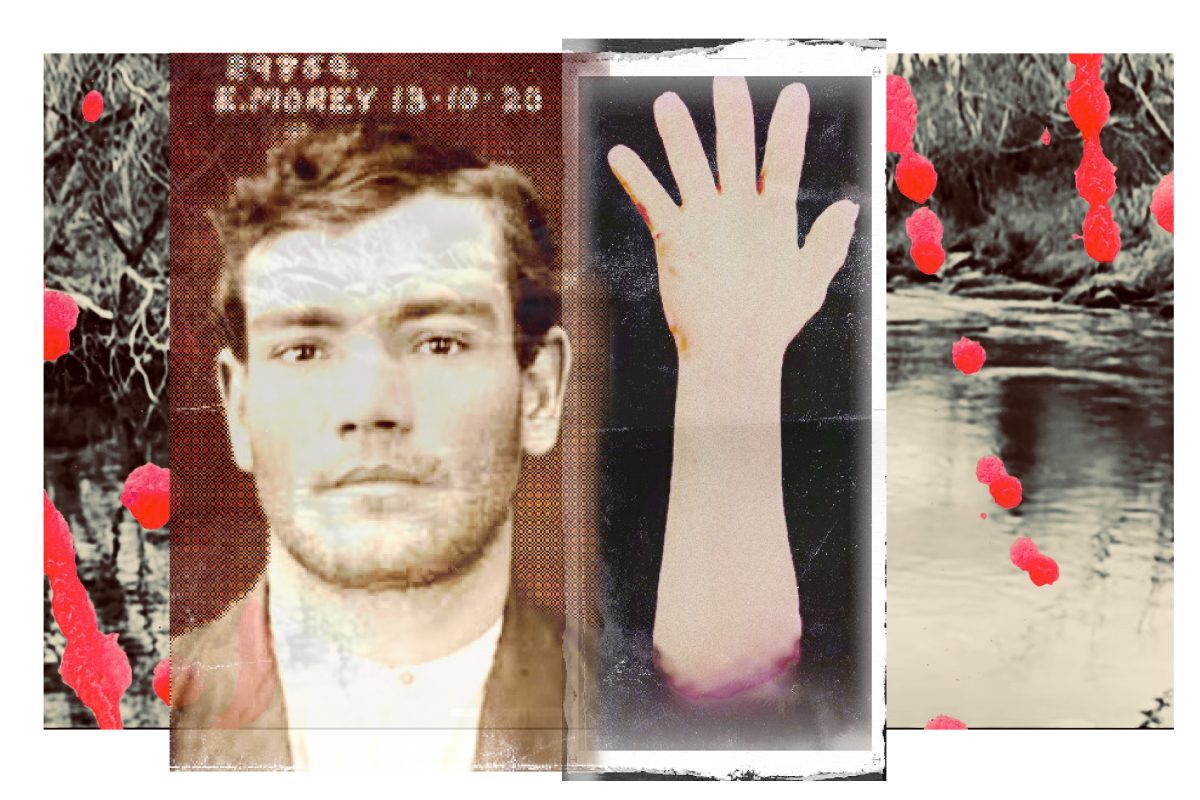
Within two weeks of finding a body in the river, Wagga police had the murderer in custody. Photo: Chris Roe.
While gloves go hand in hand with a northern hemisphere Christmas, they are less commonly worn in December down under.
But in the creepy Christmas murder case of the ‘human glove’, a Wagga detective slipped on another man’s skin to identify a waterlogged corpse.
The mystery began near Wagga on the banks of the Murrumbidgee on Christmas Day 1933, when two fishermen made a gruesome discovery.
A bloated and badly decomposed body was found in the water with its head wrapped in a chaff bag.
Police took charge of the soggy corpse and later at the morgue the state medical officer, Dr Weedon, established that the man’s skull had been bashed in.
The skin from the man’s hands and face were gone and little hope was held that he would be identified.
But just a few days later, a detective found a large piece of human skin that retained the appearance and shape of a human hand floating in the river near the place where the body was found.
Dr Weedon examined the skin and confirmed that it was likely from the mystery corpse’s right hand and wrist.
Police decided to try a novel technique and fashioned the skin into a ‘glove’ that a detective then fitted over his own hand to take fingerprints.
Extraordinarily, a match was found and the body was determined to be that of Percy Smith who had been arrested at Albury in 1931.
Investigations showed that Smith was a wanderer and had worked his way around shearing sheds in the region.
Detectives soon picked up his trail in Narrandera where he had registered for a dole cheque at the police station on October 26.
They published a description of his wagonette in the paper and a man named Charlie Seymour called to say that he had recently purchased it.
The wagonette was traced back to a well-known Wagga petty criminal named Edward Morey who was already in custody in Wagga for trying to sell stolen tools.
Despite his protestations, bloodied clothes, a bloody tomahawk and an axe that belonged to the murdered man were found in his possession.
On January 8, just two weeks after the body had been found, police charged Morey with murder.

A mugshot of murderer Edward Morey. Photo: NSW Police and Justice Museum.
An inquest was held in February by the district coroner, Mr H. Oates who concluded that Percy Smith had been murdered by Morey, on or about December 18.
“This case will go down in history as one of the most remarkable ever brought to a court in any part of the world,” Mr Oats gushed.
“I feel sure that I should not allow this opportunity to pass without voicing some comment regarding those efficient officers who have taken such a leading part in its elucidation.”
But there was to be one final twist in the tale as Morey stood trial in May 1934.
A man named Moncrieff Anderson had been one of the first to give the police information about Percy Smith’s movements. With his wife Lillian watching on, he testified in court about the wagon that had led back to Morey.
Just days before the trial concluded, police were called to ‘Tent Town’ following reports of a shooting and found Anderson with a fatal bullet wound.
His wife claimed to have heard a noise and turned to see her husband fall. She later signed a sworn statement for police.
Suspicious detectives then compared her signature to one found on love letters from a ‘Thelma Smith’ found in Morey’s possessions and determined that Lillian Anderson had been pursuing a romance with the accused killer.
When a rifle was found in the water near where the couple had lived, she confessed to shooting her husband and of writing the notes.
Edward Morey was found guilty of murder and his sentence of death was commuted to life imprisonment.
Lillian Anderson was later tried for murder, found guilty of manslaughter and sentenced to 20 years’ imprisonment.
She was released in 1944.
Original Article published by Chris Roe on Region Riverina.
















